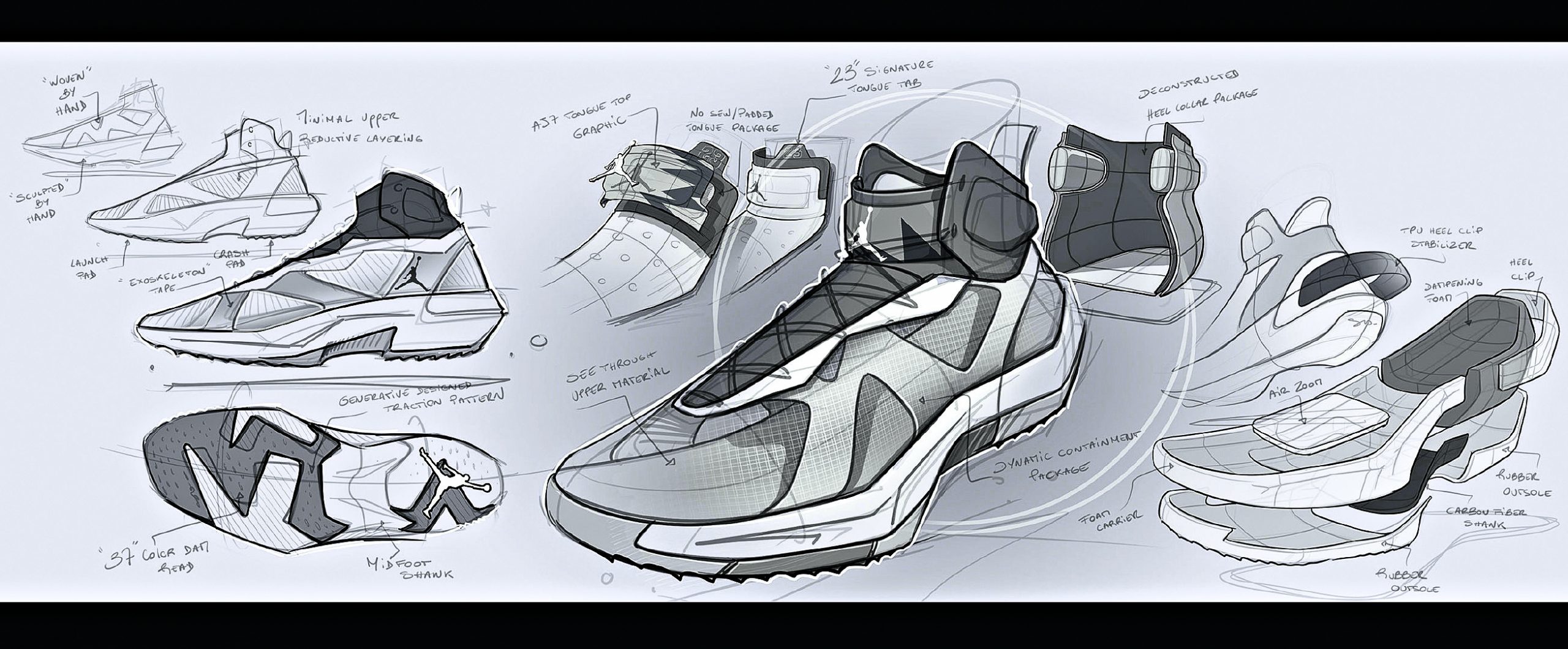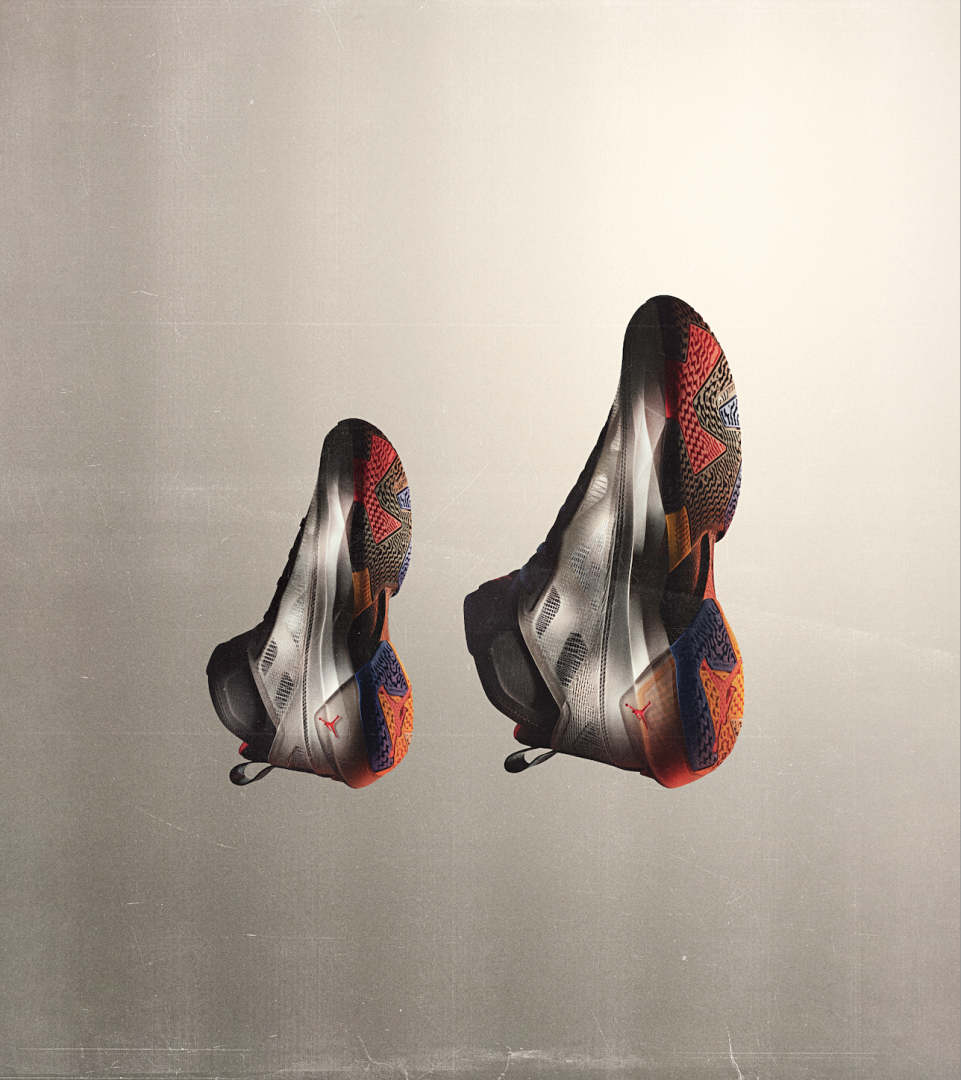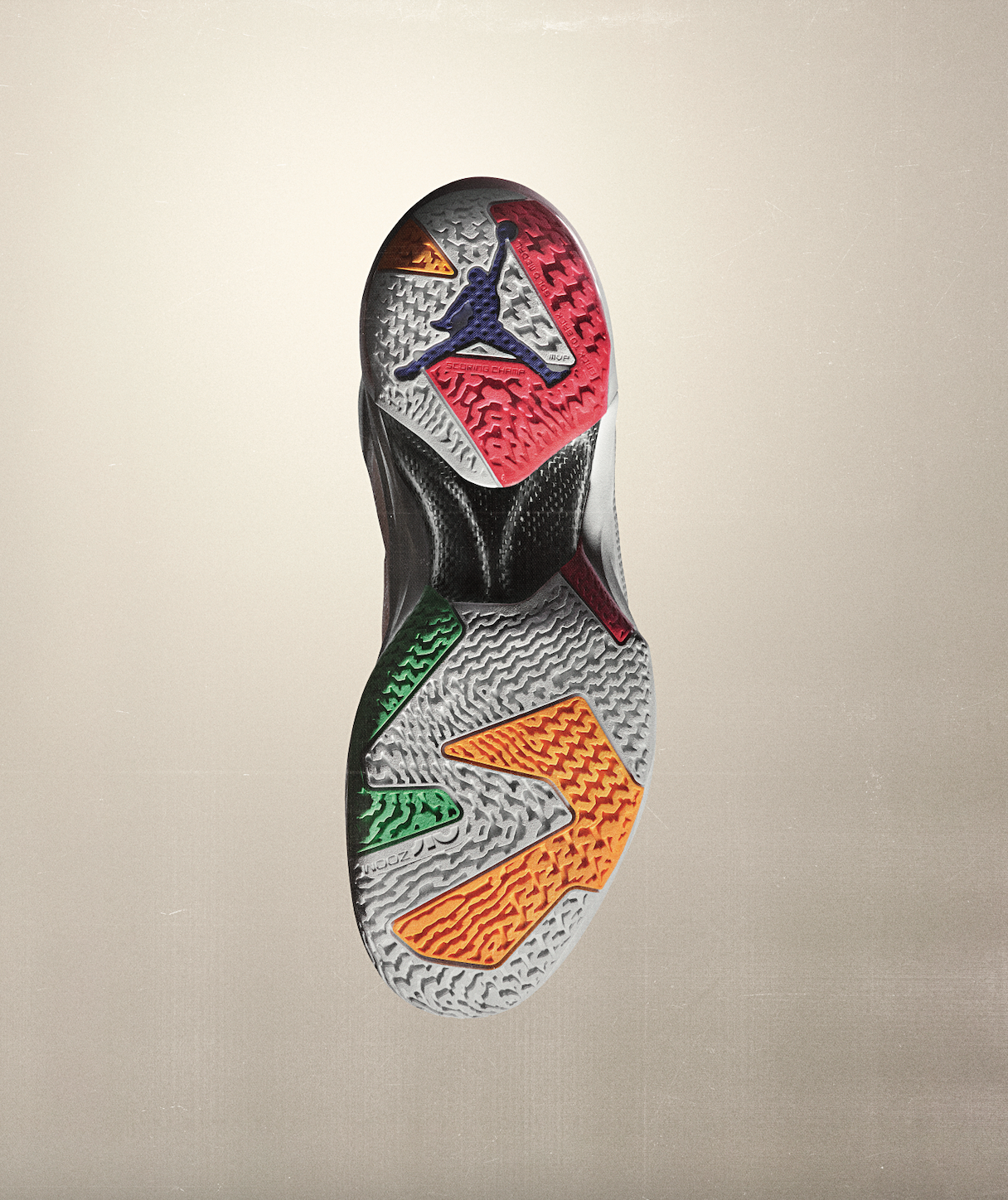What happens when you look to blend the best of speed and flight? Jordan Brand asked that question, and the answer was the Air Jordan 37.
Jayson Tatum and Satou Sabally are what we call, in the new age of positionless hoops, the ultimate hybrid. The Prince of Boston coupled with that suave demeanor is smooth yet shifty. He’ll cross you with ease and bully you on the block with his 6-10 frame, fresh out of bed.
Sabally, third-year forward for the Dallas Wings, is brilliantly versatile; her game reads like poetry. The J? Silky. Handles? Filthy. Spin cycle? Gracefully elegant. Chase down blocks? Loads of ’em.
Two of the most multifaceted hoopers on Jordan Brand’s expanding roster of basketball brilliance not only have the type of games that general managers salivate over, they’re leading the Brand into a new era of sustainability and peak performance.
Built for the future of the game and its athletes’ multi-directional play, Jumpman has always kept the visceral sense of rising through the air with blistering speed at the forefront of its discussions when dropping one of the most coveted performance sneakers on the market. The 37th iteration of Jordan’s signature line isn’t any different in that respect.
“We wanted to create this pretty much one-of-one system that really no other basketball player could feel other than in the shoe; that really celebrates the best of speed, and the best of flight,” Chad Troyer, Senior Product Line Manager at Jordan Brand, tells KICKS.
And with a roster featuring players of nearly every build in men’s and women’s professional basketball, the 37 needed to be able to blend a myriad of properties to support their athletes; from the debut of a Jordan-only foam, evolving the Leno-weave upper and delving into the three phases of a jump, all while maintaining their commitment to sustainability (but more on that later).
Nearly four decades of basketball history and heritage reside in Jordan Brand’s upcoming hybrid. So when constructing a lightweight support system that functions with the natural movements of the foot, Troyer and the Brand swung their gaze straight to the Air Jordan VII’s interior make up.
While serving as a wink to the VII during its 30th anniversary, the buffed-up ankle collar, underlying forefoot pattern and familiar geometric color blocking on the outsole all seek to evoke 1992 nostalgia.
Bam Adebayo, Rui Hachimura and Dearica Hamby all need both distinctive and effective support while wreaking havoc on the block and drawing defenders out to the midrange. The Leno-weave upper takes direct inspiration from the exoskeleton construction of the famous Nike Air Huarache and the targeted areas of protection of ankle straps and tape.
Blending Tinker Hatfield’s past innovations with modern-age performance served as an empowering anchor of inspiration throughout the 37’s process. “We’re just wanting to make it newer and better now,” Troyer adds.
From the inner paneling of the VII to the carbon fiber shank’s return for the first time since the 32, the new aesthetic created by merging the structural design with the Leno-weave upper has excited Troyer the most.
Yet the evolution of the upper is seen in a whole new space with the 37, “allowing the structure to be very strong where you need it,” says Troyer, “and then opened up and lightweight and flexible when you don’t.”
Allowing varying light and colors to poke through the panels of the forefoot, the introduction of a specialized TPE yarn amidst the tooling of the zoned upper– crafted out of a single fiber of monofilament called Arkema—pays direct homage to the meticulous craftsmanship displayed in West African basket weaving.
“You can really see inside, you can see your sock, you can see the insole. It’s just going to become a unique aesthetic where we haven’t been before,” Troyer adds.

We’re not talking about picking and pulling random ideas and influences just to be sorted
out later down the line here, we’re talking going into the deepest depths of the bottomless bag of Jumpman’s creative and technological capabilities.
The bevy of His Airness’ insurmountable athletic feats on the hardwood provide Nike’s Sport Research Lab in Beaverton with a scientific treasure trove of jumping sequences to dissect and translate toward designing footwear for the future. The result was an amalgamation of modern sports research and a contemporary treatment of reductive layering.
The basis of Jumpman’s newest modernization is rooted in NSRL’s study of the three stages of jumping: load, launch and crash. So while the ultimate goal is to create lightweight products, Troyer and the Brand knew in order to achieve their ultimate realization, a little bit of additional weight and structure was necessary—enabling them to remove copious amounts of weight from the upper by way of the Arkema threads.
The Load Phase acts as a conduit for transferring motion from the heel through the forefoot. By way of the AJ XI’s staple carbon fiber shank underneath the midfoot and the inclusion of Formula 23 foam, which is being debuted in the Jordan Luka 1, the users’ second-long movement of loading is instantaneously softened.
“It’s more responsive, more comfortable, and also more sustainable than any foam that we’ve been able to use,” Troyer tells KICKS. “So it has performance properties that are great just to provide new solutions.”
The Launch Phase may mistakenly feel like the final stage of the process, but by creating additional protection for the heel and landing, athletes are much more inclined to “engage the rest of the system and ultimately jump higher,” Troyer says.
Affixed with full-length Zoom Strobel alongside an additional Zoom Air unit in the forefoot for increased responsiveness and the sensation of a double-stacked propulsion, the inserted rebound technology is placed as close to the foot as possible.
The Crash Phase, the instantaneous deceleration of the jump, is an aspect rarely traversed within performance sneakers, but no longer.
“It’s really integrating those aspects and creating the system based on the insights and asking if we can help athletes crash harder, meaning protecting their heel and allowing them to put more force into their jump, then they’re going to be able to engage the rest of the system and ultimately jump higher,” Troyer says.
The sleek and structured heel features a TPU mold that encases the Brand’s proprietary foam technology, ultimately acting as a crash-landing pad for the energy and force the wearer exudes when striking the court.
“It’s totally a balance,” Troyer adds.

His Airness was the ultimate hybrid on the court. Just like his game, his 37th signature is a quintessential blend of strength and grace, of dominance and modernism.
Beefing up their roster with the additions of Paolo Banchero, Rhyne Howard and Isabelle Harrison this summer, the Brand is able to bring their young athletes behind the curtain of crafting the model early in their careers. “They’re really along with us on the journey throughout, before it’s even done,” Troyer says.
And among the first few flavors of the silhouette to drop—including “Beyond Borders” in September and “The Hare” this Fall—are both Tatum’s and Sabally’s PEs.
“Now that we have this new roster of young exciting talent,” Troyer says, “we’re really learning from them as well to help inform what the ultimate hybrid means.”
Photos courtesy of Nike.

